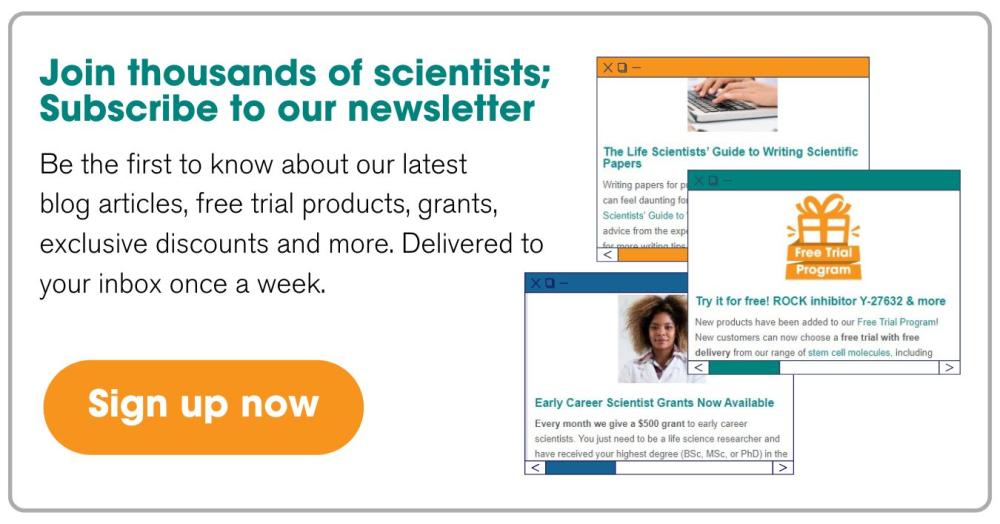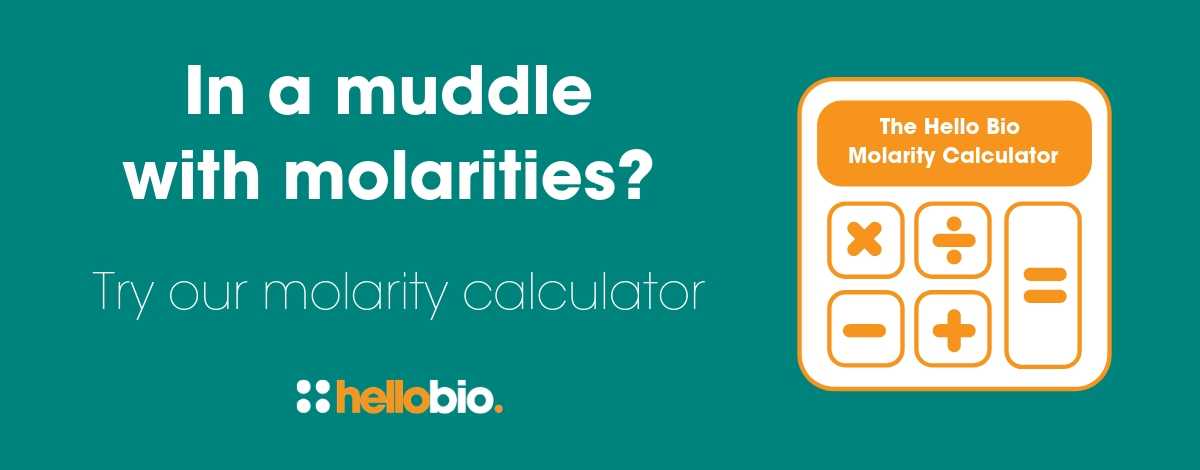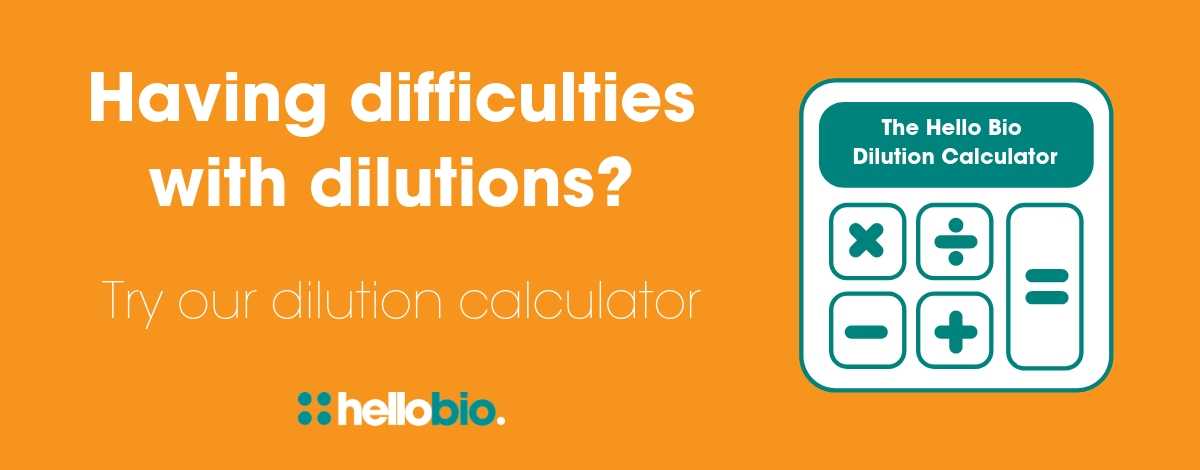10 Useful AI Tools for Life Scientists
Over the last few years, AI has begun to revolutionise productivity in the workplace, with the science lab being no exception. From automating tedious tasks to accelerating data analysis, artificial intelligence is helping scientists save time, improve accuracy, and make new discoveries faster than ever.
Whether you're working in genomics, neuroscience, drug discovery, or cell biology, there are lots of AI-powered tools available that are designed to support your research, save you time and improve your productivity.
We’ve picked out ten useful AI tools for life scientists that are making a real impact in the lab and beyond.
1) ChatGPT (OpenAI)
Perhaps the most common AI tool used in workplaces around the world today, ChatGPT is a large language model chatbot that uses artificial intelligence to generate human-like conversational text, answer questions, write in a variety of creative text formats and even assist with coding. Since 2022, researchers have been using the tool to assist with troubleshooting, writing and reviewing code, identifying potential routes for deeper research, and simple calculations. Many scientists also use it to help write abstracts, generate grant ideas, or get Python or R coding support.
Jacky Liang of the University of Ottawa shared his thoughts on ChatGPT: “Lately, I have used ChatGPT for coding during my bioinformatics work. It is incredibly helpful for troubleshooting scripts, generating code snippets, and understanding programming concepts. Like any tool, it still requires monitoring to ensure accuracy, but it helps to save time on problem solving and debugging, allowing me to focus more on analyzing data and interpreting results.”
Aalok Varma of the University of California, San Diego, also uses ChatGPT as well as Gemini, Google’s equivalent AI assistant. He told us: “I try my best to not depend too much on generative AI, but I do use ChatGPT and Gemini. I find them especially useful in troubleshooting code syntax errors. These can be hard to spot for a human. I also use generative AI to help me with some mundane writing tasks. They have helped speed up boring tasks, but sometimes they, too, end up being time sinks.”
ChatGPT is useful for:
-
Writing
-
Brainstorming
-
Troubleshooting
-
Coding support
-
Protocol planning
2) AlphaFold
For non-commercial lab researchers, another great free tool is AlphaFold from Google’s DeepMind AI laboratory. The tool has the ability to predict 3D protein structures from amino acid sequences with a remarkable degree of accuracy, and can be used to model interactions between structures composed of: proteins, DNA, RNA, ligands, ions and chemical modifiers. The platform was trained on vast protein structure databases and can model structures that could take months or even years to determine using traditional lab techniques like X-ray crystallography or cryo-EM. To date, AlphaFold has already predicted over 200 million proteins, but it can also be used to predict new proteins by inputting your own structures through the AlphaFold Server. Using the tool can help scientists to infer protein function, design experiments, and identify drug targets more quickly.
Matthew Wilkinson, Product Development Manager at Hello Bio explained what he loves about AlphaFold: “AlphaFold is an extremely useful and revolutionary tool for life scientists. The fact that you can now use it to input mutations and predict their effects is so helpful.”
AlphaFold is useful for:
-
Predicting 3D protein structures
-
Reducing the number of structural biology experiments needed to understand protein shape
-
Guiding mutagenesis studies
-
Interpreting experimental results
-
Designing assays
3) Scite
When dealing with citations in academic writing, the Scite tool could be a valuable addition to your online workspace. Scite uses machine learning to help researchers see how a scientific paper has been cited - not just how many times. Unlike traditional citation counts, the tool analyzes full-text scientific articles and classifies each one as either supported, contradicted, or mentioned by later research. This benefits life scientists by allowing them to quickly assess the credibility of a study by seeing if further research supports or challenges it.
Scite is useful for:
-
Classifying citations
-
Discovering relevant papers
-
Tracking citations of your own work
-
Evaluating research impact for grant applications or literature reviews
-
Avoiding retracted or contradicted papers
4) NotebookLM
If your lab work involves wading through endless research papers, grant proposals, or protocol documents, NotebookLM could be a game-changer. Developed by Google, this AI-powered tool lets you upload your own documents such as PDFs, Google Docs, or notes, and then asks and answers questions based only on those sources. This means it stays grounded in the material most relevant to you, and reduces the risk of hallucinated responses.
It can help summarise long articles, extract key points, compare findings across documents, and even draft outlines for reports or literature reviews. Whether you’re reviewing previous experiments, planning a new study, or collaborating with lab mates, NotebookLM can help to keep your research organised and focused.
NoteBookLM is useful for:
-
Analysing uploaded documents
-
Summarising long papers
-
Extracting key findings from datasets
-
Organising notes
-
Ensuring the generated material is relevant
5) BenevolentAI
The BenevolentAI platform is for exclusive use of pharmaceutical companies and research teams working in drug discovery. It was designed to improve how scientists uncover novel targets, generate drug candidates, and predict their success in the clinic by using a vast, interconnected map of biological data. Using artificial intelligence, the tool can find hidden links between genes, diseases, pathways, and potential compounds, enabling researchers to identify novel drug targets, repurpose existing drugs, predict mechanisms of action and assess patient stratification opportunities.
It was used during the early stages of the COVID-19 pandemic to identify baricitinib, an existing rheumatoid arthritis drug, as a potential treatment which was later validated and approved for emergency use, as reported in The Lancet in February 2020.
BenevolentAI is useful for:
-
Generating fast data-backed hypotheses
-
Novel drug target validation
-
Drug repurposing
-
Spotting complex data patterns
-
Cross-disciplinary exploration (genomics, disease pathways, pharmacology)
6) ASCEND by BenchSci
ASCEND is a popular tool which supports scientists through decision-making in the pre-clinical ‘wet lab’ stage of drug discovery. It uses vast amounts of biomedical data to help bench scientists and pre-clinical teams inside pharma and biotech companies by acting as an AI lab assistant or research co-pilot. It can help with decision-making with regard to selecting reagents, designing experiments and reducing trial-and-error experimentation. Key features include a reagent and model systems selector, a navigator which identifies biological connections, a custom project building space, and a risk mitigator.
ASCEND by BenchSci is useful for:
-
Design of pre-clinical experiments
-
Identifying novel biological connections
-
Enhanced decision-making
-
Time and waste-saving in the lab
-
Flagging of potential safety or efficacy issues
7) ResearchRabbit
ResearchRabbit is another free AI tool designed to help scientists discover, visualise, and organise academic literature. It differs from Elicit in that it offers a visual representation of research topics and the connections between papers and their authors via interactive graphs and citation maps based on seed papers. This allows researchers to explore these networks to uncover relevant literature, track research trends, and identify the key contributors of a particular field. The tool will also suggest and recommend papers based on the papers you add to your collection.
ResearchRabbit is useful for:
-
Identifying relevant studies and their connections
-
Building and organising literature collections
-
Helping with hypothesis generation
-
Interdisciplinary research
-
Identifying potential collaborators
8) Napkin
If you’re looking for help with a diagram or illustration for your next scientific paper or poster presentation, Napkin is the latest free AI tool to turn text into visuals. The platform will auto-generate smart and stylish infographics, diagrams, flowcharts, and more, to help you convey scientific concepts through clear visuals. While software like BioRender remains incredibly popular for complex illustrations and poster presentations, Napkin offers a uniquely direct ‘text-to-diagram’ capability which will instantly visualise any sentence inputted to the platform.
Napkin is useful for:
-
Creating mind maps or flowcharts
-
Organising your thoughts and ideas visually
-
Early brainstorming
-
Producing quick diagrams for ideation sessions, slide decks or social media posts
9) DeepCell
DeepCell is an AI-powered platform that assists biologists with single-cell analysis by segmenting uploaded images. The tool uses advanced microfluidics, high-resolution imaging, and deep learning to provide high-dimensional morphological insights. This innovative approach allows users to explore cellular phenotypes without the need for labels or prior hypotheses. The platform also offers real-time cell tracking, the development of cell atlases, and the analysis of cell behaviour.
DeepCell is useful for:
-
Identifying and characterising malignant cells in cancer biology
-
Profiling immune cell subtypes in immunology research
-
Monitoring and identifying distinct cell states
-
Assessing cellular responses to treatments
10) Elicit
And finally, for researchers writing literature reviews, another free tool is Elicit. Many scientists use this free tool to quickly find, summarise, and evaluate scientific literature, and it can also help with brainstorming research ideas, identifying gaps, and organising findings for systematic reviews. It can save hours of manual searching through databases like PubMed or Google Scholar, and can summarise dense papers, as well as organising literature into more structured or visual representations such as spreadsheets or tables.
Elicit is useful for:
-
Literature review
-
Research question exploration
-
Summarising papers
-
Extracting key information
-
Synthesizing research findings
"Hey! What about..."
Tell us about the ones we’ve missed! What's your favourite AI tool? Which platforms help to boost your productivity in the lab? Share them with us in the comments or tweet us at @hello_bio!
________________________________________________
If you enjoyed this article, why not check out the other resources available on our blog. We are passionate about supporting life scientists including early career life scientists and PhD students - with really low-priced reagents, antibodies and biochemicals, early career scientist grants, and resources to help with both personal and professional development. We know how tough it is - so we hope you find these helpful!
More General Support for Life Scientists
For advice on wellbeing, dissertations, presenting at conferences, wellbeing, PhD support, networking and lots more, we have a huge range of articles to help - just click below:
Save up to 50% on our high purity reagents...
When you get to the stage of planning your experiments, don't forget that we offer a range of low-cost, high-purity agonists, antagonists, inhibitors, activators, antibodies and fluorescent tools (yes - they really are around half the price of other suppliers!) You can use our Quick Multi-Search Tool to search for lots of products in one go, and the range includes:
- Enzyme inhibitors and activators
- Chemogenetic ligands
- Ion channel modulators
- GPCR & ionotropic receptor ligands
- Cell biology reagents & biochemicals
Technical resources
Try our Molarity Calculator: a quick and easy way to calculate the mass, volume or concentration required for making a solution.
Try our Dilution Calculator: an easy way to work out how to dilute stock solutions of known concentrations
We also offer a comprehensive range of technical resources including antibody protocols and methods, product guides and mini-reviews:
And finally, don't forget to check back in with our blog regularly for our latest articles. If there’s something you’d love to contribute to the community, whether that’s an interview or article, drop us a line at hello@hellobio.com
---




























